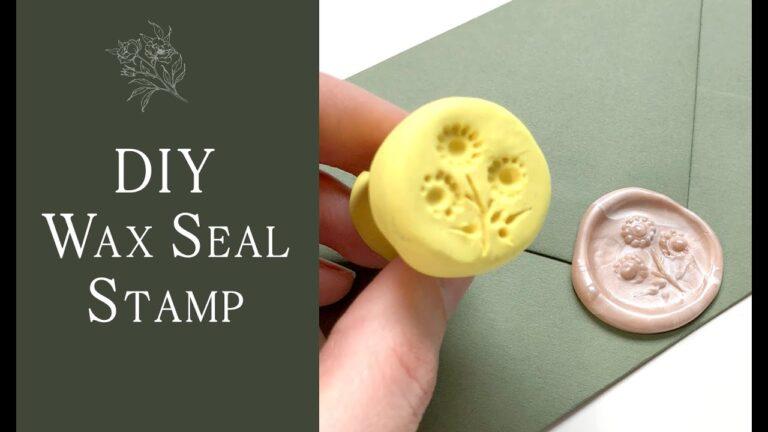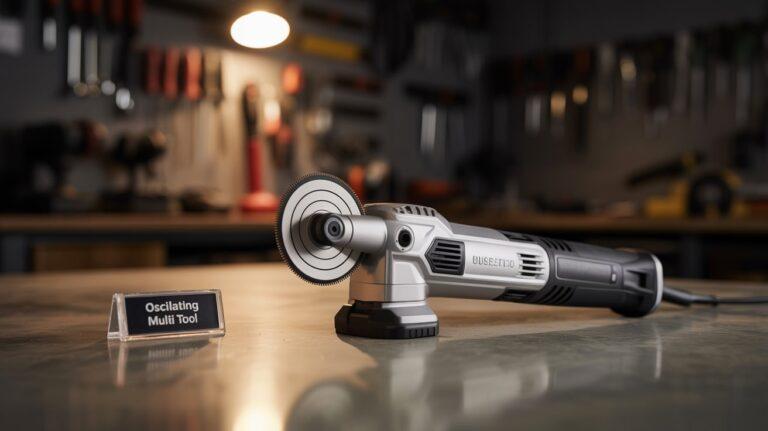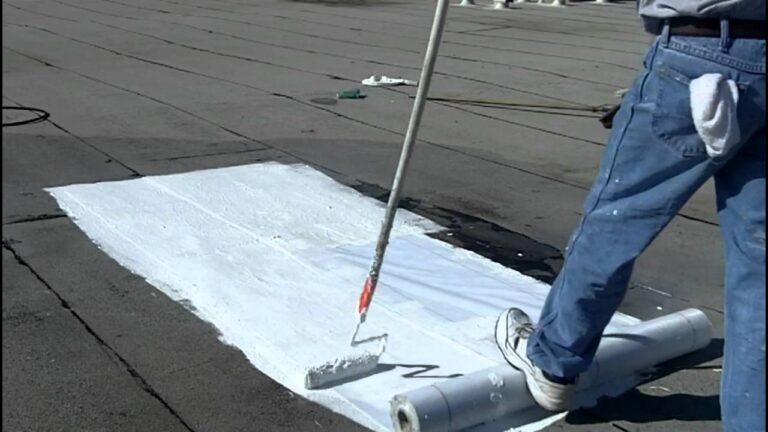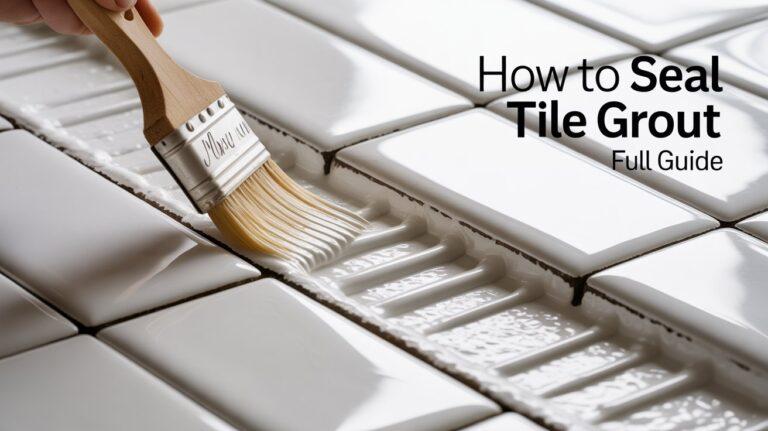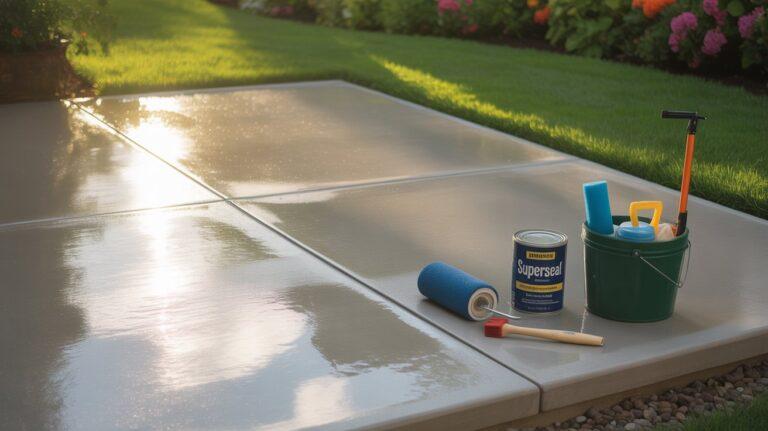How to Seal Railroad Ties: Ensuring Durability
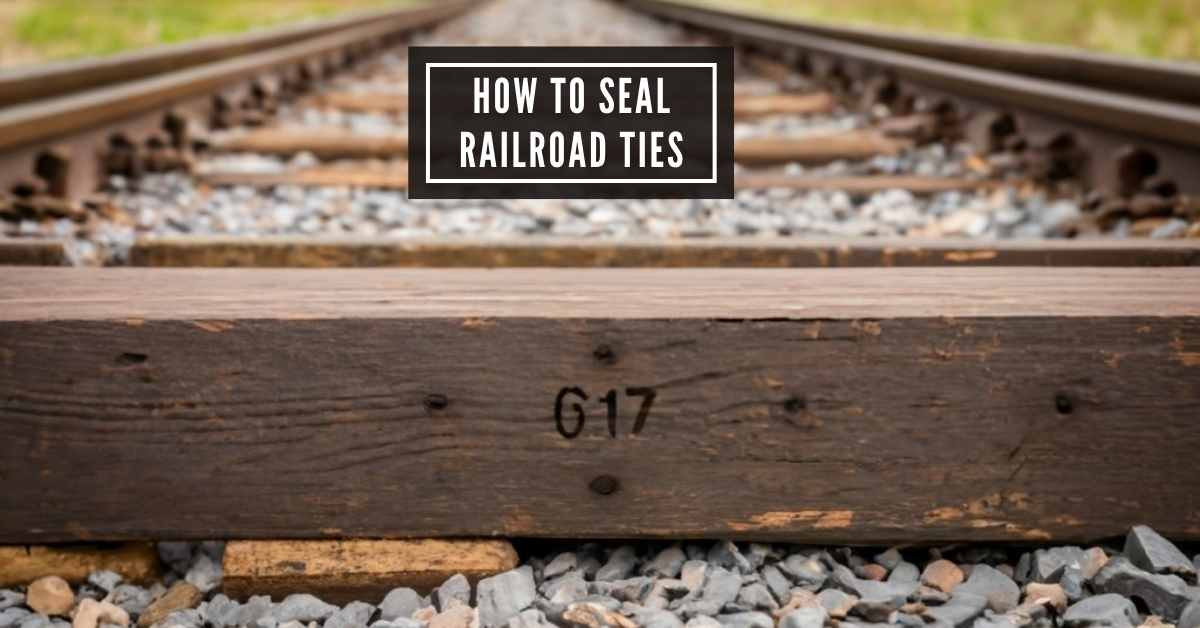
To seal railroad ties, clean the surface and apply a wood preservative or sealant. Ensure ties are dry before applying any protective coating.
Protecting and extending the life of railroad ties is crucial for landscaping and construction projects. Sealing railroad ties helps to prevent rot and insect infestation, maintaining their aesthetic appeal and structural integrity. Using a high-quality wood sealant not only guards against weathering but also enhances the wood’s natural beauty.
Homeowners and landscapers often seek to preserve these practical yet rustic elements, and sealing is a practical step in their maintenance routine. For those interested in DIY projects, sealing railroad ties is a manageable task that brings long-term benefits, especially when it comes to building retaining walls, garden beds, or unique outdoor features. Remember to choose an appropriate sealant designed for outdoor wood and follow the product’s instructions for the best results.
Introduction To Railroad Ties And Their Importance
Railroad ties form the foundation for railways across the world. These sturdy, rectangular supports lay under steel rails. They help to hold tracks in the correct position. Think of them as the bones of a railway, critical to safe and efficient train travel. Over time, exposure to weather and heavy loads can wear these ties down. Sealing them is key to keeping trains rolling smoothly.
Understanding Railroad Ties And Their Function
Railroad ties, also called sleepers, have a crucial role. They provide stability to the rails and ensure that they remain spaced just right. Without ties, train tracks could easily shift, causing accidents or derailments. Though made for toughness, regular maintenance is needed to uphold their integrity.
Materials for ties range from wood to concrete and steel. Each type needs a specific kind of care. Sealing wooden ties is a common practice to help them last longer against the elements.
The Need For Durability In Railroad Ties
| Material | Benefits | Common Threats |
| Wood | Flexibility, affordability | Rot, insects |
| Concrete | Longevity, low maintenance | Cracking, weather damage |
| Steel | Strength, durability | Rust, corrosion |
Ties must withstand heavy trains and harsh weather. This table shows materials, their benefits, and threats. Sealing, especially for wood, fights these threats to keep ties strong.
Challenges In Maintaining Railroad Ties Over Time
- Weather conditions: Rain, snow, and heat can damage ties.
- Insect infestations: Bugs like termites can eat wood ties.
- Rot and decay: Wood ties can rot, losing their strength.
- Chemical exposure: Spills can deteriorate any type of tie.
These challenges require attention and action. Sealing is an effective measure to protect ties against many of these issues. With the right sealant, ties gain a barrier against moisture and decay. This extends their lifespan significantly.
Material Considerations For Railroad Ties
When choosing railroad ties for your project, materials matter. These hefty beams support railroad tracks, but they’re also popular for landscaping and building. To ensure stability and longevity, picking the right material is key. Let’s dive into the options available and understand why sealing them can extend their life.
Common Materials Used For Railroad Ties
Different materials offer unique benefits for railroad ties. Common choices include:
- Wood: Often creosote-treated to resist decay.
- Concrete: Durable and low maintenance.
- Plastic and Composite: Made from recycled materials.
- Steel: Very strong and lasts long.
Pros And Cons Of Different Material Types
| Material | Pros | Cons |
|---|---|---|
| Wood | Flexible, natural look | Can rot or split |
| Concrete | Long lifespan | Heavy, hard to install |
| Plastic/Composite | Eco-friendly, resists rot | May not support heavy loads |
| Steel | Very durable | Can corrode |
The Role Of Sealing In Preserving Materials
Sealing your railroad ties is vital. It prevents decay and damage. Wood ties get the most from sealing. It stops moisture and pests. Concrete can benefit too. Sealing fights freeze-thaw cycles. Plastic and composite ties need less care. But a coat improves color staying power. Steel ties also gain from sealing to resist rust.
Pre-sealing Preparation
Getting your railroad ties in perfect shape creates a lasting effect. Sealing them isn’t just a slapdash effort—it requires careful steps. Before you begin, a detailed preparation routine is crucial. Clean and ready ties grip the sealant better. This guarantees a sturdier and more eye-pleasing result. Here’s how to get started.
Assessing The Condition Of Railroad Ties
Assessing the tie’s health is step one. Check for signs of rot or bug damage. Firm, solid ties mean you’re good to go. Note any cracks or splits – these areas need extra attention during the sealing process.
Cleaning And Preparing The Surface
- Remove dirt and debris with a stiff brush.
- Wash the ties using a mild detergent mix.
- Rinse with clean water and let dry completely.
Start with clean, dry wood for the best results. Patience during drying lays a great foundation for sealing.
Choosing The Right Sealing Products
Choosing a sealant is like picking the right armor for your wood. You’ll find oil-based and water-based options. Oil-based sealants are durable and penetrate deeply. Water-based sealants are less smelly and easier to clean up.
Choosing The Right Sealing Products
Choosing a sealant is like picking the right armor for your wood. You’ll find oil-based and water-based options. Oil-based sealants are durable and penetrate deeply. Water-based sealants are less smelly and easier to clean up.
| Product Type | Advantages | Best For |
|---|---|---|
| Oil-Based | Durability, deep penetration | Rough conditions |
| Water-Based | Less odorous, easy cleanup | Eco-friendly projects |
How to Seal Railroad Ties Perfectly
The sealing process protects railroad ties from weather and decay. Properly sealed railroad ties last much longer. Learn how to seal them correctly below.
Step-by-step Guide To Sealing Railroad Ties
- Clean the railroad ties. Remove dirt, debris, and old sealant.
- Choose the right day with no rain forecast.
- Apply the sealant. Use a brush for even coverage.
- Spread it carefully, reaching all sides.
- Allow the sealant to penetrate the wood.
Professional Techniques For Effective Sealing
- Use quality brushes or sprayers.
- Work in sections to maintain control.
- Overlap each pass for thorough coverage.
- Seal the ends of ties extra well.
Drying And Curing Times For Sealants
Sealants vary in drying times. Check the product’s instructions.
| Sealant Type | Drying Time | Curing Time |
|---|---|---|
| Oil-Based | 24-48 hours | 5-7 days |
| Water-Based | 6-12 hours | 3-5 days |
Don’t rush the process. Allow proper time for best results.
Post-sealing Care And Maintenance
Once you seal your railroad ties, post-sealing care is crucial. This ensures they last long and keep looking good. You need to know the right steps so they stay protected against weather and wear.
Regular Inspection And Maintenance Schedules
Keeping an eye on your railroad ties is vital. Set a routine where you check them often. Look for signs like cracks or soft spots. These checks help catch problems early on.
- Monthly visual checks
- Seasonal in-depth reviews
- Immediate action when issues are spotted
Preserve the beauty and function with regular clean-ups. Remove debris and wipe surfaces gently.
Troubleshooting Common Issues After Sealing
Sometimes, issues crop up even after sealing. Know what to watch for and how to act quickly.
| Issue | Solution |
|---|---|
| Peeling Sealant | Apply a fresh coat |
| Stains | Clean with a mild detergent |
| Water Pooling | Ensure proper drainage |
Long-term Preservation Strategies
To protect your railroad ties for years, apply long-term strategies. This means more than just routine checks.
- Re-seal every 2-3 years
- Manage vegetation to prevent root damage
- Ensure good drainage to avoid water damage
By following these practices, your railroad ties remain in top shape for many seasons.

Environmental And Safety Considerations
When working with railroad ties, consider both the planet and your health. Sealing wood requires attention to the materials used and the method applied. This will ensure a greener and safer project outcome. We’ll explore eco-friendly sealant options, the environmental implications of sealants, and crucial safety tips while sealing.
Choosing Eco-friendly And Safe Sealants
Not all sealants are created equal. Opt for water-based or plant-based products. These sealants minimize harmful emissions. They are better for your health and the environment. Seek products with low Volatile Organic Compounds (VOCs). These will release fewer toxins into the air. Look for labels like “non-toxic” or “eco-friendly” for guidance.
The Impact Of Sealing On The Environment
Sealing wood can affect our planet. Some sealants contain chemicals that harm plants and animals. They pollute the air and water. To reduce this impact:
- Choose biodegradable sealants that break down without leaving toxins.
- Reuse or recycle empty sealant containers.
- Dispose of extra sealant correctly. Do not pour it into the ground or drains.
Safety Precautions During The Sealing Process
Always wear protective gear while sealing. This includes gloves, safety goggles, and masks. Work in a well-ventilated area to avoid breathing in fumes. Keep children and pets away from the work area. Follow the manufacturer’s instructions for safe application and cleanup.
Enhancing The Lifespan Of Railroad Ties
Extending the life of railroad ties is vital for rail network durability. Proper maintenance and preservation methods can prevent decay and damage. In this conclusion, we will summarize key benefits, explore future techniques, and stress sustainable practices.
Recap Of Sealing Benefits
Sealing railroad ties is a protective measure. It shields wood from moisture, rot, and insect damage. Benefits of sealing include:
- Extended durability: Seals out elements that cause wear.
- Cost efficiency: Reduces replacement needs, saves money.
- Enhanced safety: Prevents tie failure, ensures reliable support.
Best practices in sealing apply correct materials and methods. They include:
- Clean surfaces: Remove dirt and debris before application.
- Choose quality sealants: Employ products designed for outdoor wood.
- Regular application: Reapply sealant as recommended by the manufacturer.
Future Innovations In Railroad Tie Preservation
Research in material science promises breakthroughs. Future methods will aim for longer-lasting, eco-friendly options. Upcoming innovations may include:
- New sealants: Biodegradable and more resilient formulas.
- Smart materials: Self-healing woods or coatings that signal wear.
- Improved application techniques: Precision methods for even coverage.
The Importance Of Sustainable Maintenance
Environmentally friendly care for railroad ties is a must. Sustainable maintenance ensures:
- Less waste: Prolong tie life, reduce disposal.
- Green sealants: Minimize chemical runoff, protect ecosystems.
- Resource conservation: Use fewer trees, save forest habitats.
Committing to green practices benefits railways and the planet.
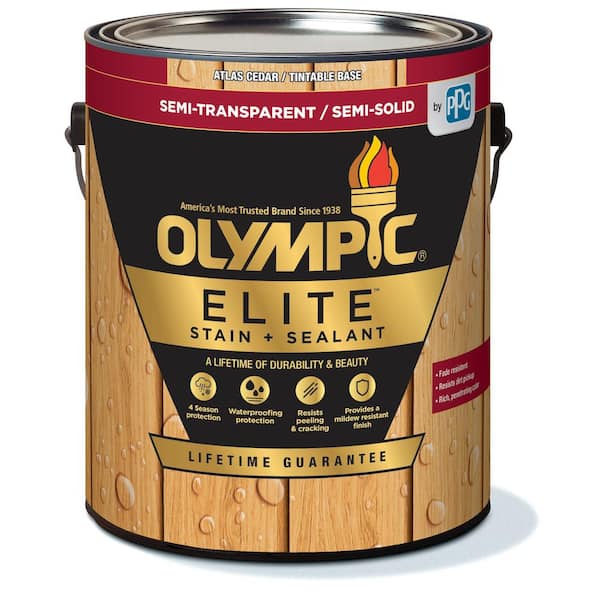
Credit: www.homedepot.com
Frequently Asked Questions
What Do You Coat Railroad Ties With?
Railroad ties are typically coated with creosote, a protective preservative that curbs rotting and insect infestations. This treatment helps increase the ties’ longevity and durability.
Can You Seal Creosote Railroad Ties?
Yes, you can seal creosote railroad ties using a sealant specifically designed for creosote-treated wood to prevent leaching.
How Do You Protect Railroad Ties?
Protect railroad ties by applying a wood preservative, using sealants to repel water, positioning for proper drainage, avoiding soil contact, and performing regular inspections for rot or insect damage.
What Sealer To Use On Creosote Treated Wood?
Use a specialized coal tar epoxy or a high-quality oil-based sealer designed for creosote-treated wood to ensure strong adherence and durability. Always follow the manufacturer’s application instructions for the best results.
What Are Railroad Ties Used For?
Railroad ties, also known as sleepers, are used to support the rails and maintain the track’s alignment, elevation, and gauge, ensuring trains can pass safely and smoothly.
Conclusion
Sealing railroad ties extends their lifespan, guarding against weather and decay. Remember, the right sealant and method matter. Your effort now preserves function and appearance for years. Ready to take on the project? Your ties await their protective shield, ensuring stability and aesthetic appeal.
Let’s safeguard your investment today.

I am Robert Sandin, a professional sealing expert with a diverse range of expertise. From concrete to various other materials, I possess in-depth knowledge and experience in the art of sealing. On my website, I offer valuable tips and expert recommendations on sealing techniques and products for different materials. Whether it’s concrete, wood, metal, or more, I am committed to providing you with the guidance you need for successful sealing projects.

